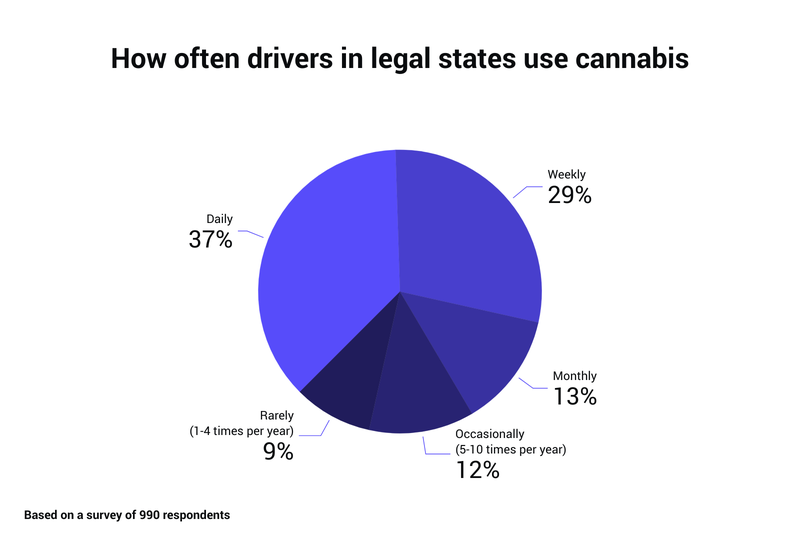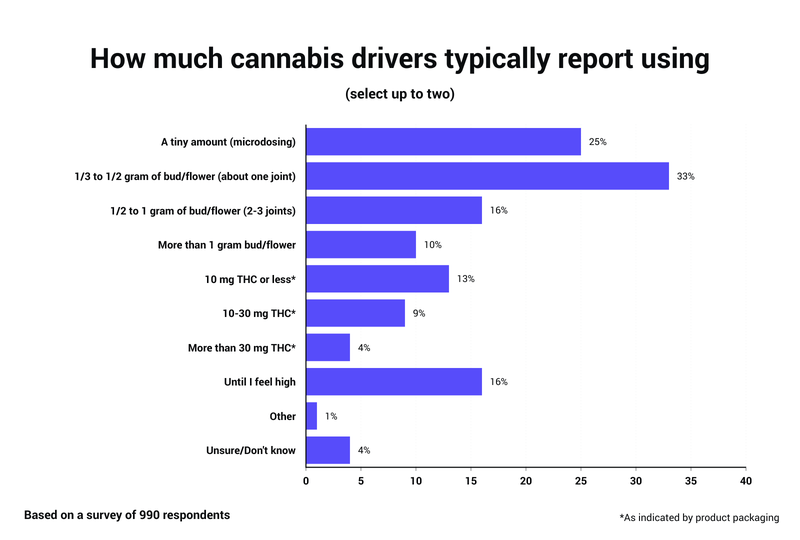Intro
With 15 states having now legalized recreational cannabis use (plus Washington, D.C.), more drivers than ever are grappling with decisions about when it is — and isn’t — OK to drive after consuming the drug.
Laws and best practices for drivers who drink alcohol have been established by decades of science, but research on the effects of cannabis on driving is far more limited. The first states to legalize recreational cannabis were Washington and Colorado almost 10 years ago in 2012. However, there still isn’t clear guidance for drivers and tourists about when it’s safe to get behind the wheel after using cannabis in legal states, leaving drivers largely on their own to decide.
Here’s what we do know:
- Cannabis causes impairment. Cannabis can impair motor skills, cognitive function and other driving abilities. If you’re impaired or are unsure if you’re impaired, experts agree you shouldn’t drive, but that’s not exactly clear guidance. NHTSA’s recent campaign attempted to turn this idea into a more simple rule for drivers that states, “if you feel different, you drive different.”
- Nobody’s really sure how long that impairment lasts. Current recommendations for how long people should wait to drive after consuming cannabis range anywhere from 2 to 24 hours, depending on who you ask. Washington’s Liquor and Cannabis Board recommends at least five hours for inhaled cannabis (or longer if it’s edible). In comparison, Colorado’s state website recommends waiting to drive at least six hours after smoking up to 35 mg of THC and at least eight hours after eating or drinking up to 18 mg.
- More Americans are in favor of legalization than ever. Cannabis is becoming more accepted nationwide. A Gallup poll from October 2020 shows that 68% of adults support the legalization of marijuana in the U.S. This is the highest support has been for the measure in the past five years.
- There isn’t solid evidence that cannabis contributes to car crashes and traffic fatalities. The drug’s role in car crashes isn’t as clear as the link between alcohol and crashes, according to IIHS, which found early evidence that crashes increased in recreational cannabis states. Another study by the National Bureau of Economic Research found that legalization did not affect traffic fatalities in Colorado and Washington. Cannabis’s impact on road safety is still being studied and debated.
- Guidelines around cannabis use and driving are unclear. Drivers who drink alcohol can look to established guidelines to know how a beer or two could affect their driving and how long they should wait. Such guidelines haven’t been established for cannabis — and creating them could be complicated. Some states, like Vermont and Massachusetts, have adopted the “if you feel different, you drive different” terminology to provide a guideline for drivers. Other states have per se limits that give drivers a legal limit for THC in the bloodstream. However, because THC can stick around in the body long after consumption, these limits have plenty of critics. In fact, one evaluation from AAA’s Foundation for Traffic Safety states that “a quantitative threshold for per se laws for THC following cannabis use cannot be scientifically supported."









